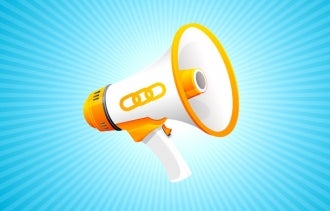The web today is comprised of trillions of links. Who links to your site and how they link to it is the fundamental factor driving your search engine rank and your website traffic.
If you're not sure where to begin when it comes to building links with other sites, here are 10 easy ways to get started:
1. Create a blog.
Creating content on a consistent basis not only builds links internally (by linking out from your posts), but it also gives you the ability to build links naturally, because content is your greatest asset when attracting links. A blog is essential to many strategies outlined here, such as linking out. You absolutely need a blog in today's online environment to survive.
2. Internal linking.
You have pages and posts on your website, so make the most of them. Internal links are huge for link building because you can control everything about them, from the location on the page to the anchor text. This is something that most people overlook--please do not! Make sure to steer your content in the direction of other posts or pages so you can link to them.
Warning: Do not use exact-match anchor text in your site's navigation (sitewide links). This will most likely be another spam filter from Google.
3. Resources/links pages.
Other webmasters have created links, or resource, pages, and these are legitimate opportunities to get links. If the links on that page are relevant, you've got a chance.
Unfortunately, it's not as easy as just asking for a link. The following two suggestions are specific strategies to help you get webmasters liking you before you ask and greatly increase your chance of getting the link.
4. Ask people you know for a link.
Whether it's your friends, relatives, employees, colleagues, business partners, clients, or anyone else, ask them for a link. Someone you know has a website or blog, so take advantage.
5. Make it easy to link to you.
If you want people to link to you, make it easy for them. Create HTML-ready snippets that people can plug right into their content to link to you, because some linkers in your community might not be too web-savvy. Either create a "Link to Us" page or use a little JavaScript to generate the HTML at the end of each article or post.
Note: This might not be the best option for every community. Are you in the cement niche? Then this is perfect. Are you talking about internet-related business? Then this might not be your best bet, because the majority of your audience probably already knows how to link.
6. Research your competitors.
When it comes to finding new link opportunities, competitor research is one of the first things you should do. Essentially, you're piggy-backing off their success. While some links are unobtainable (that is, a random mention in a news post), others can be diamonds in the rough (a high-quality niche directory).
Try using SEOmoz's Open Site Explorer for this. Plug in your competitors and export their backlinks to a CSV file. Do this for all your competitors so you can get all their links in one place in a spreadsheet workbook. Then you can sort them by various link metrics to find the best opportunities.
7. Link out.
Linking out is huge. Don't be a link hoarder; you're going to create content, so use it to gain favor with other people.
8. Build relationships.
This is the No. 1 link-building strategy in the world. Get to know people! Build relationships with them, because it'll come back to you in the form of links (that is, if they're the right people).
The best part about this is that it's just like real life. Remember how people say, "It's not about what you know, it's about who you know"? The same goes for link building.
9. Niche-specific directories.
As opposed to general web directories, niche-specific directories only accept sites that meet a certain topic criteria. For example, one directory might only accept sites about arts and crafts. Some of these directories are free, while others are paid. One example is Business.com, a directory for business websites. The cost is $299 per year.
10. Paid directories.
Some directories ask for money before accepting your link(s) in their listings. Dir.Yahoo.com, for example, is a paid directory. Once again, while some of these can pass on legitimate value, others offer little and aren't worth your time or money.
View the Original article





